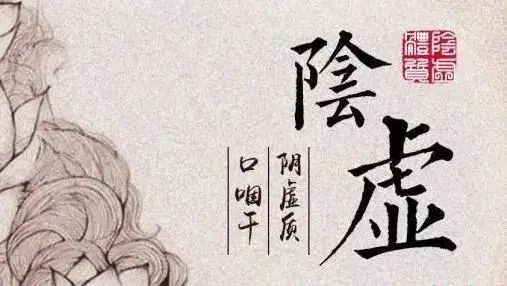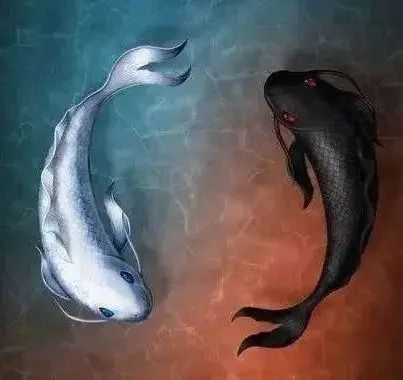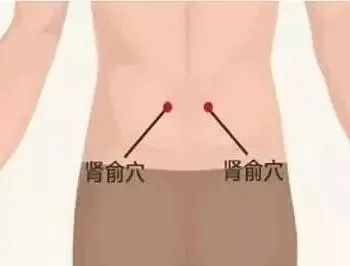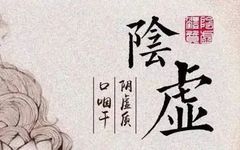Promoting a Healthy Lifeto Spread Health Knowledge
Click below to follow for free↓↓↓
Traditional Chinese Medicine (TCM) generally categorizes human constitution into nine basic types: Pinghe (平和型, Harmonious), Qixu (气虚型, Qi Deficiency), Yinxu (阴虚型, Yin Deficiency), Yangxu (阳虚型, Yang Deficiency), Shire (湿热型, Damp-Heat), Qiyu (气郁型, Qi Stagnation), Tan Shi (痰湿型, Phlegm-Damp), Xueyu (血瘀型, Blood Stasis), and Tebing (特禀型, Special Constitution).
Each constitution reacts differently in terms of complexion, emotions, and personality, and thus requires different methods of regulation.
Today, we will discuss the Yin Deficiency constitution, its symptoms, and how to regulate it.

01
What is Yin Deficiency?
It is akin to a car engine running low on oil or coolant while still operating, causing it to overheat.
In a state of imbalance within the body, a deficiency of Yin leads to an excess of Yang, resulting in internal heat. The term “Yin” refers to substances such as blood and bodily fluids.
In the human body, Yin and Yang are balanced and interdependent. However, when Yin is deficient, Yang appears excessive, manifesting as internal heat. Thus, the ancients said: “Yin deficiency leads to internal heat.”

Internal heat differs from external heat; it is caused by pathogenic heat or phlegm-damp accumulation, necessitating Yin nourishment to balance Yin and Yang, thus eliminating the internal heat.
Therefore, individuals with Yin deficiency may appear comfortable on the surface, yet they experience internal heat and deficiency of bodily fluids, leading to discomfort despite an outwardly normal appearance.
02
What Symptoms Indicate Yin Deficiency?
Individuals with Yin deficiency may exhibit the following symptoms:
1. Dry and hot sensation in the eyes.
2. Dry mouth, with a constant desire for cold water or beverages to quench thirst.
3. Heat in the palms and soles, sometimes accompanied by discomfort in the hands and feet, leading to a preference for keeping them outside the covers while sleeping.
4. Irritability and easy anger, often feeling internally restless.
5. Bone steaming and tidal heat, with sensations of heat radiating from within.
6. Night sweats, soaking the pillow and sheets during sleep.
7. Weakness and soreness in the lower back and knees.
8. Hair loss and tinnitus, with the latter being a sharp sound that worsens at night.
9. Dry stools and yellowish urine.
10. Red tongue with thin or no coating, and a rapid pulse.
Below is a typical tongue manifestation of Yin deficiency, characterized by a red tongue with no coating.
03 What Causes Yin Deficiency?
Firstly, genetic factors play a significant role. For instance, if parents have a Yin deficiency constitution, their children are likely to develop the same constitution. Secondly, long-term emotional repression can lead to stagnation and transformation into internal heat, depleting Yin essence. Additionally, chronic heart dysfunction or excessive use of diuretics in hypertensive patients can also lead to Yin deficiency. Lastly, a diet high in spicy and warming foods, excessive consumption of heat-clearing and damp-drying formulas, or frequent late nights can gradually harm Yin.
04 Characteristics of Individuals with Yin Deficiency
The most notable characteristic of individuals with Yin deficiency is the presence of external cold and internal heat. The external cold arises from insufficient bodily fluids and blood, which are essential for nourishing and warming the body. Their deficiency leads to inadequate warmth. In winter, individuals with Yin deficiency may experience cold hands and feet, often mistaken for Yang deficiency. However, in summer, they may feel heat in their palms and soles, yet in winter, they may also feel cold like those with Yang deficiency. Due to the severe internal heat from Yin deficiency, as winter approaches and Yang energy begins to retreat inward, these individuals may experience internal heat accumulation, feeling cool on the surface but internally hot, with symptoms of irritability, dry mouth, and a desire for cold water, particularly worsening in the evening.
05 How to Regulate Yin Deficiency Constitution
The Huangdi Neijing states, “The interplay of Yin and Yang through the four seasons is the foundation of all things; thus, sages nourish Yin in autumn and winter to align with this principle.” All things follow a natural cycle of rise and fall. In autumn and winter, Yang energy begins to retreat, and the inward gathering of Yang requires the cooperation of Yin to achieve the effect of internal storage. However, for those with Yin deficiency, as Yang energy enters, Yin cannot cooperate due to its insufficiency, leading to internal dryness and heat. Therefore, autumn and winter are the best seasons for nourishing Yin; attention to Yin nourishment during this time allows Yang energy to store effectively, promoting better growth in the following spring.
1. Consider consulting a TCM practitioner for a medicinal formula to nourish Yin. A decoction can be made with 30 grams of Shu Di Huang (熟地黄, Rehmannia), 9 grams of Gou Qi Zi (枸杞子, Goji Berries), 9 grams of Mai Dong (麦冬, Ophiopogon), 9 grams of Fu Ling (茯苓, Poria), 3 grams of Rou Gui (肉桂, Cinnamon), and several sections of pig spine bones, simmered together with salt and other seasonings to create a medicinal dish, taken once a week to nourish kidney essence and replenish Yin. Duck meat can be used as a substitute for pork. It is important to note that individual constitutions vary, and it is advisable to follow a physician’s guidance; pregnant women should avoid this remedy. Shu Di Huang is renowned for its ability to nourish Yin essence and is a key ingredient in classic TCM formulas such as Jin Gui Shen Qi Wan (金匮肾气丸, Kidney Qi Pill) and Liu Wei Di Huang Wan (六味地黄丸, Six-Ingredient Rehmannia Pill), making it an exceptional tonic for Yin essence. The famous Ming dynasty physician Zhang Jingyue frequently used Shu Di Huang in various treatments, earning him the nickname “Zhang Shu Di.”
2. Combine appropriate acupressure techniques and mediums to regulate Yin deficiency. Many people enjoy acupressure in daily life; so which acupoints are beneficial for Yin deficiency? (1) Er Ma Xue (二马穴, Er Ma Point) – Located in the depression between the metacarpophalangeal joints of the ring and little fingers. Apply a small amount of Zheng Guang Jing Si massage cream to the fingertip and massage this point 100-300 times, which helps nourish Yin, tonify the kidneys, and promote Qi flow. This method harmonizes the heart and kidneys, balancing Yin and Yang, and facilitates urination. (2) Yong Quan Xue (涌泉穴, Yong Quan Point) – Located at the junction of the anterior 1/3 and posterior 2/3 of the sole of the foot. Use a generous amount of Zheng Guang Jing Si massage cream, applying pressure with the thumb in a back-and-forth motion about 100 times, which nourishes Yin and reduces heat, helping to subdue excessive Yang. (3) Lao Gong Xue (劳宫穴, Lao Gong Point) – Located in the center of the palm, at the midpoint between the tips of the middle and ring fingers when the fingers are bent. Use the thumb to apply pressure from the base of the little finger, moving through the palm’s horizontal lines to Lao Gong, performing 10-30 times, which clears heat from the heart and kidney meridians. (4) Li Dui Xue (历兑穴, Li Dui Point) – This point can be quite painful, so apply lighter pressure. Press each point 60 times, morning and evening. Li Dui is the Jing point of the stomach meridian, located on the outer side of the second toe, about 0.1 inch from the corner of the toenail. Massaging this point with Zheng Guang Jing Si massage cream can treat excessive internal heat due to Yin deficiency. (5) Yao Yan (腰眼, Yao Yan Point) – An extraordinary point located in the lower back, in the depression about 3.5 inches lateral to the spinous process of the fourth lumbar vertebra. Warm the Zheng Guang Jing Si massage cream in the palms, then apply to the Yao Yan for 30 seconds, allowing the essence to penetrate, followed by gentle kneading to generate warmth, promoting meridian flow. Regular massage of Yao Yan not only strengthens the lower back but also enhances kidney function and longevity. (6) Shen Shu Xue (肾俞穴, Shen Shu Point) – A primary point of the kidney meridian, regular pressure can strengthen kidney Qi and enhance kidney function, particularly beneficial for women with menstrual irregularities and low libido. Women experiencing menstrual issues may try massaging Shen Shu with Zheng Guang Jing Si massage cream to alleviate their concerns. Shen Shu is located 1.5 inches lateral to the spinous process of the second lumbar vertebra, with one point on each side. Before bed, sit on the edge of the bed, relax, and apply a small amount of Zheng Guang Jing Si massage cream to both hands, rubbing the Shen Shu points for 10-15 minutes, initially feeling cool, then warming, which can relieve stress and improve mood. During walks, one can also make fists and gently tap the Shen Shu points 30-50 times to increase blood flow to the kidneys and improve kidney function.

Daily Health Knowledge Sharing
Click below to follow for free↓↓↓
Editor’s Recommended Articles
1.The Spleen and Stomach are the Foundations of Longevity! 2 Classic Dietary Remedies to Strengthen the Spleen, Eliminate Dampness, Nourish Yin, and Moisten the Spleen
2. Strengthening the Spleen is Vital for Life; A TCM Formula to Tonify the Spleen and Stomach, Harmonizing Digestion
3.So Precious! Over 800 Folk Remedies for Every Ailment, Save for Future Reference!
4.The Most Comprehensive Collection of Tuina Techniques Videos—Hurry to Save if You Want to Learn Tuina Massage!
Like is a form of encouragement Share to spread joy

